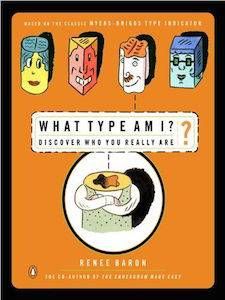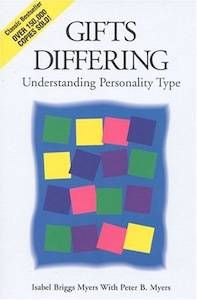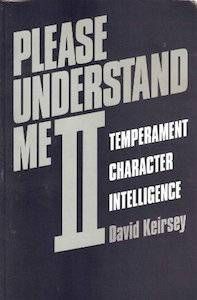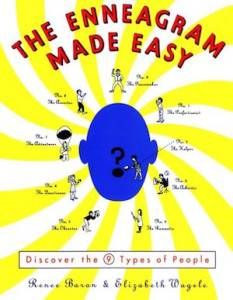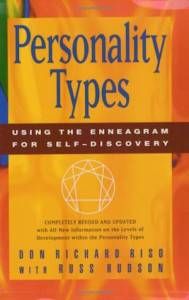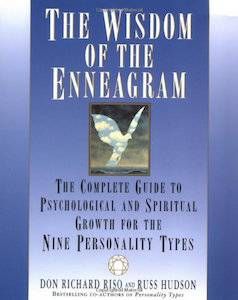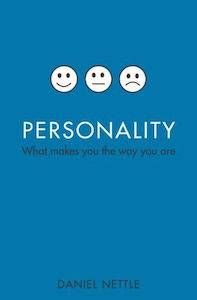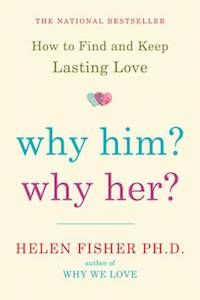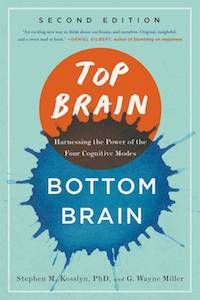Myers-Briggs Books
The Myers-Briggs Type Indicator or MBTI is personality test that sorts people into one of sixteen types. Each type is a combination of four letters: E for extrovert or I for introvert, S for sensor or N for intuitive, F for feeler or T for thinker, and P for perceiver or J for judger. This theory, created by Katherine Cook Briggs and her daughter, Isabel Briggs Myers, is based on Jung’s cognitive functions theory. There are a few different interpretations of the theory out there, each coming from a different angle. You can take the Myers-Briggs Type Indicator here. The test or a variation of it is included in all of the books below as well. You can also find more Myers-Briggs books here.
What Type Am I? Discover Who You Really Are by Renee Baron
At 171 pages long, this is an excellent introduction the basics of Myers-Briggs theory. It’s simple and easy to understand, and might give you a better idea of whether or not you want to delve deeper into Myers-Briggs study.
Gifts Differing: Understanding Personality Type by Isabel Briggs Myers and Peter B. Myers
The original Myers-Briggs manual, this book gives a detailed outline of the theory (both the four letters and the cognitive functions behind them) and explains how a person’s type impacts them and others around them at home, work, and in romance.
Please Understand Me II: Temperament, Character, Intelligence by David Keirsey
Keirsey took the Myers-Briggs theory and categorized the personality types into four groups of four–the Guardians (ISTJ, ESTJ, ESFJ, and ISFJ), the Artisans (ISFP, ESFP, ESTP, and ISTP), the Idealists (INFP, ENFP, ENFJ, and INFJ), and the Rationals (INTJ, ENTJ, ENTP, and INTP). Keirsey’s theory focuses heavily on type behavior, whereas Myers-Briggs delves a little bit deeper into why people of a certain personality type behave a certain way.
Personality Type by Lenore Thomson
If Keirsey examines behavior and Myers-Briggs reveals some of the mindset behind the behavior, this lengthy exploration of the cognitive functions delves even deeper into the core ways that each type absorbs information, forms patterns, and communicates with the outside world. To explain the cognitive function theory, there are eight functions and each personality type consists of four functions in a specific order, known as a stack. A stack will contain Extroverted Intuition (Ne) or Introverted Intuition (Ni), Extroverted Sensing (Se) or Introverted Sensing (Si), Extroverted Feeling (Fe) or Introverted Feeling (Fi), and Extroverted Thinking (Te) or Introverted Thinking (Ti). For example, the ENFP’s function stack is Ne, Fi, Te, Si. Remember when scientists discovered a second layer of information embedded in DNA? Discovering the cognitive functions is a lot like that. The four letters give you a ton of information, but the cognitive functions bring everything to a whole new level.
Enneagram Books
The Enneagram is an ancient personality typing system that originated with the Desert Fathers or the Sufis, depending on who you ask. Needless to say, it’s really, really old and based on some pretty esoteric mysticism. Because of this, and the fact that there has only been one psychological study on it to date, it’s a lot less accepted than Myers-Briggs. It took me (rational 5w4 that I am) a long time to come around to the idea that there might actually be something there, but once I did, like many, it opened up a whole new world of understanding to me. If Myers-Briggs gives insight into your greatest strengths, the Enneagram exposes your greatest weaknesses, which is one of the reasons why this personality typing system is a) not as fun and b) has a tendency to turn people off. This is probably the most complicated personality theory out there, so I will stick a very basic explanation: there are nine types. Each type has a core fear and core desire that drives them. For example, type eight, The Challenger, has a basic fear of being harmed or controlled by others and a basic desire to protect themselves and to be in control of their own life and destiny. You can take the Riso-Hudson Enneagram Type Indicator here. You can also purchase the indicator in book format here.
The Enneagram Made Easy: Discover the 9 Types of People by Elizabeth Wagele and Renee Baron
This is an easily digestible, very basic introduction to the Enneagram and a good place for most people to start. I will add a caveat: for some a simple introduction to such a complex typing system is not enough and can seem reductionist, so use discretion. Also, identifying your Enneagram type is often much more difficult than identifying your Myers-Briggs type, so I recommend taking the official Riso-Hudson Enneagram Type Indicator instead of the one in this book.
Personality Types: Using the Enneagram for Self-Discovery by Don Richard Riso and Russ Hudson
At over five hundred pages, this is one of the most in-depth books on the Enneagram. It explains what each type looks like at various levels of emotional health and explores all the nuances of the Enneagram, including wings (secondary personality types).
The Wisdom of the Enneagram: The Complete Guide to Psychological and Spiritual Growth for the Nine Personality Types by Don Richard Riso and Russ Hudson
While Personality Types provides an in-depth exploration of the nine types, this book explains how that information can be used to further psychological and spiritual growth in the individual. This book also includes an accurate version of the type indicator.
Big Five Books
The Big Five theory posits that there are five personality traits–Openness, Conscientiousness, Extraversion, Agreeableness, and Neuroticism–and the degree to which you embody these traits determines your personality. There are various versions of the Big Five questionnaire online. You can take one here.
Personality: What Makes You the Way You Are by Daniel Nettle
This book provides a solid overview of the Big Five theory and contains the Newcastle Personality Assessor to help you determine where you fall on the scale of each of the five traits.
Biological Personality Theories
Myers-Briggs, the Enneagram, and The Big Five are all theories that explore personality type as a combination of nature and nurture. In recent years some scientists have been busy exploring the biology behind personality development. Below are books on two of the most compelling theories to result from this study.
Why Him? Why Her?: How to Find and Keep Lasting Love by Helen Fisher, Ph.D.
Helen Fisher, a biological anthropologist, developed the theory that there are four core personality types determined by the brain’s exposure to certain hormones and neurotransmitters in utero. Explorers are driven by dopamine, Negotiators by estrogen, Directors by testosterone, and Builders by serotonin. This book focuses on how understanding this typology system can impact love and romance, but it extends beyond that as well. Chapters four through seven contain descriptions of each type. You can take the assessment in the book or online here.
Top Brain, Bottom Brain: Harnessing the Power of the Four Cognitive Modes by Stephen M. Kosslyn, Ph.D. and G. Wayne Miller
Stephen Kosslyn, a former psychology professor at both Harvard and Stanford, dismantles the outmoded left brain/right brain theory and posits that a more accurate way of dividing the brain is top and bottom. Similarly to Helen Fisher, he then used that understanding to come up with four cognitive modes–Mover Mode, Perceiver Mode, Stimulator Mode, and Adaptor Mode–and posits that your dominant cognitive mode is a result of how the top and bottom parts of your brain interact. You can take the test here. Save
